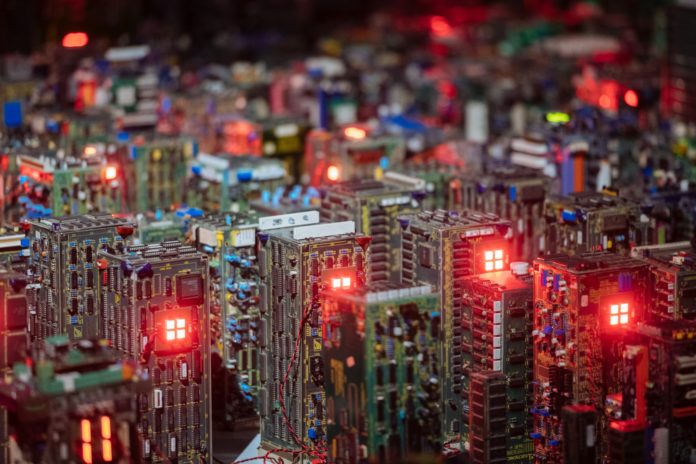The pandemic has forced almost every organisation to adapt to new ways of doing business. This meant that in an increasingly evolving digital-first landscape, embracing new technology equals long-term survival. For medium-sized enterprises, however, the IT transformation journey is not without some speed bumps.
On the hunt for IT solutions that will allow them to remain competitive despite financial and talent limitations, many midsize businesses rushed into deploying technologies without adequate planning or study. Now that the fog of COVID-19 seems to have been lifted, some of the business moves may have to be unmade.
In a webinar entitled “A Roadmap for Simplifying IT Infrastructure for the Mid-Market Enterprise” organised by Jicara Media and hosted by Dell and Microsoft, experts looked at the medium enterprise sector, and discussed solutions to overcome IT transformation challenges.
According to Liong Sze Jin, the CTO of jewel retailer Tomei, cost is the primary driver behind most enterprises’ hesitancy to upgrade their IT infrastructure amid the pandemic.
“At one end, companies are tightening their belts, and at the other end, things are getting more expensive. So the question to companies today is, ‘How are we going to get the best in terms of ROI,’ when we (talk about) spending things on infrastructure,” he said.
Next to cost, companies are considering scalability prior to making any new IT investment, Liong added.
“Companies want to invest in something that they can expand, and is ready for the future. I think we all know that cloud is ready for the future. And cloud has a lot of capabilities that we can now tap into when we invest in our infrastructure.”
Last but not least among companies’ concerns is complexity.
“There are just so many brands and so many different technologies, and so many different solutions to choose from today. Choosing (among) them is one issue, but making them work together is another challenge to be faced. So complexity and expertise— finding the right people with the right skill set to do it is indeed a cause of concern as well,” Liong explained.
Value drivers
According to Chaary Narasimhan, Data Centre Architect for Dell Technologies, there are several IT innovation efforts that drive value for any enterprise:
- Optimising operations
- Cloud
- Workloads
- AI and edge
In order to modernise operations, he emphasised that automation can work wonders for any business organisation, which will save on time, manual labour, and cost.
For cloud, Narasimhan highly encouraged the use of hybrid, which will allow increased data security and flexibility, whereas for workload, modern infrastructure can be leveraged to get the best results.
With the expected new developments in 5G, AI will continue to drive new business opportunities. Likewise, Narasimhan noted the rise of AI users from edge locations.
In order to fully reap the benefits of the areas mentioned above, there are two pathways that businesses can take: either build an infrastructure, or consume it.
“Building means you as an IT, you’re going to rack and stack it, and you’re going to buy servers, network, storage— integrate everything and put a tedious task of IT force, and build everything and make it working,” Narasimhan said.
The benefits are far superior, he observed, when a company consumes infrastructure instead of building it.
“At the end of the day, you have to provide services, applications, and virtual machines to your end users. That is where IT needs to concentrate on— not on underlying plumbing that is actually needed to build your data centre, where there is no value at all. That’s where you have to onboard solutions like hyper-converged infrastructure, which you can actually bring into your data centre, power on, and just start building your applications directly, rather than building everything from scratch on your own.”
Systems inventory
To avoid committing fatal mistakes, which could cost a company tremendous amounts of money, an inventory of both hardware and software should be the first step in modernising any IT infrastructure, said Danny Tay, Azure Stack HCI and Cloud Specialist, Microsoft.
“My advice is to document or to list what is movable and what’s not, what are the legacy systems and so on, and whether or not you need them. Once you have all those lists, maybe you have 20 of them in an organisation, then you slowly go through them— ‘How important are these?’ Or ‘Can I move this to something else? Can I consolidate,’ and stuff like that. Traditionally, we do see a lot of customers trying to move legacy systems to the cloud. And chances are it’s very difficult, so those systems can continue to be on-premises,” Tay elaborated.
“Data centre management, or automation of the management, it’s the next step that many organisations out there should actually embark on. That’s where the Azure Stack HCI can actually help. You don’t go to the cloud, but rather you bring the cloud down to on-premises,” he added.
“With that capability, and with just a single pane of glass for management, it’s actually a lot easier by clicking the mouse over the place; you can actually create VMs in the cloud, test the application on Azure, and when you’re done and you’re happy with it, you can pull that particular VM back down on-premises into your Azure notes, and then run it as if you’re running it in the cloud. You actually save a whole lot of money developing it in the cloud, and then using it in the cloud,” Tay remarked.
Meanwhile, Dell, which has three decades of joint innovation with Microsoft, has also developed its Dell EMC Integrated System, specifically tailored to the Microsoft Azure Stack HCI.
“This integrated system is an all-in-one validated HCI system that integrates the new HCI operating system from Microsoft with an intelligent infrastructure that is provided by Dell Technologies. It is designed to modernise and transform the IT operations in three different ways,” Narasimhan said.
The three ways are:
- Simplification of the management experience by giving a full lifecycle management automation for both hardware stack and software stack
- Cloud-like flexibility
- Reliable technical support
“We don’t just give you infrastructure and walk away. We want to make sure your IT infrastructure is successful. We will help you with your day-to-day IT operations. If there are any performance issues, any hardware issues, you hit a bug or any security vulnerabilities, Dell will be the single call support, where you can just log a case with us and we will help you to troubleshoot your hardware and software stack,” he added.
Among the enterprises that leveraged Microsoft’s Azure Stack HCI, which features Dell EMC’s Integrated System, was Tomei. According to Liong, although they had to upskill a bit following the adoption of new technology, it was not a quantum leap.
“First, of course, we evaluated the needs of the company, or what the goal was. We also determined why we wanted to move to the cloud, what are the costs and operational advantages that we’ll have if you take that step forward? After that, we assessed our own environment to see whether we were ready in terms of IT skill set, or resource readiness,” Liong said.
“We also looked at our application readiness, because not every application is built for the cloud, and we do have a lot of legacy systems. Furthermore, we went on to assess the security and compliance considerations in terms of public cloud governance (among vendors),” he added.
With the deployment of the Azure Stack HCI, many of the workloads within Tomei’s IT team became easier, Liong noted.
“It took away a lot of our complexity. We don’t have to manage many devices; we moved from two full server racks, to just half a rack. In terms of the business perspective, we also managed to streamline a lot of operations. And I believe the more important factor is, this new infrastructure has actually helped us to actually meet the fast-moving business demands today. We can actually provide more solutions more quickly. My IT team now has more time to actually look at other matters to add value to the business,” he said.
Looking ahead
Many more challenges lie ahead for business organisations across verticals, and it’s not just during black swan events like the COVID-19 pandemic. In preparation for any digital transformation journey, experts shared several pointers moving forward.
For Narasimhan, security must always be a top priority rather than an afterthought.
“(Most of the problems happen because) security was not thought about during the design phase itself. It was more of an aftermath, like once the infrastructure has been deployed, then security comes into the picture. What we tried to suggest is to have security right from your design phase. With the HCI platform, we designed it right from the hardware layer, securing the hardware infrastructure, plus the software-enclosed virtualised infrastructure, to run on-premises,” he said.
Tay likewise affirmed the focus on security.
“At Microsoft, we believe in a zero-trust policy. We have a zero trust policy, which I would advise all customers to have a similar policy as well. I believe Dell has it too. Basically, we don’t trust anything at all. The weakest link for any security and any IT-related infrastructure is actually the endpoint devices, right? So you start looking at it from an endpoint device perspective. Those are the weakest things— our notebooks, our mobile phones, and so on,” Tay explained.
In closing, he also reiterated the importance of treating data centre transformation as a journey rather than a one-time, big-time undertaking.
“It (the transformation) cannot happen overnight. You should look at it over a period of time, like a year, two years, or three, and ask yourself, ‘Where would you want to be with your data centre three years from now, five years from now?” Tay suggested.














